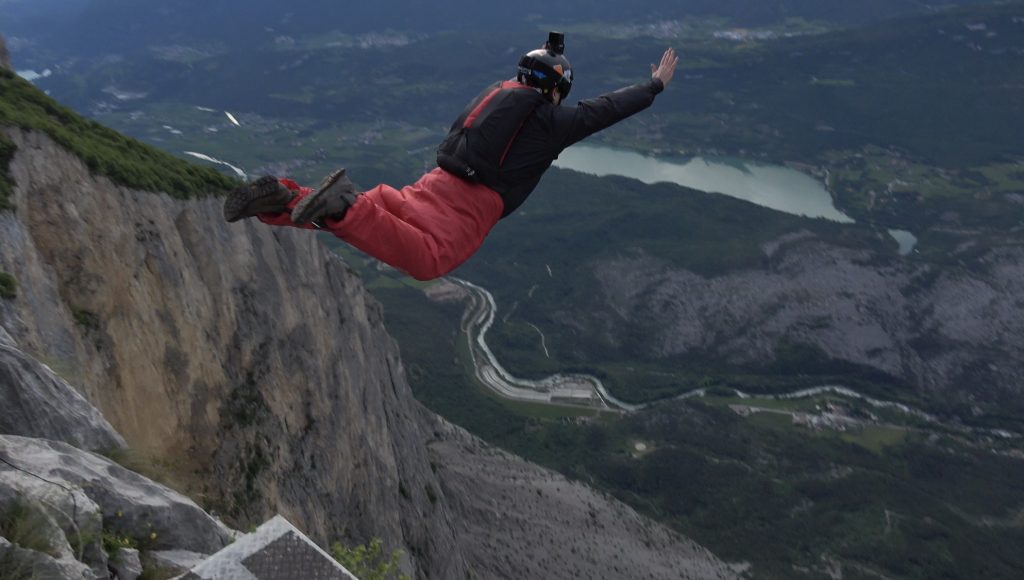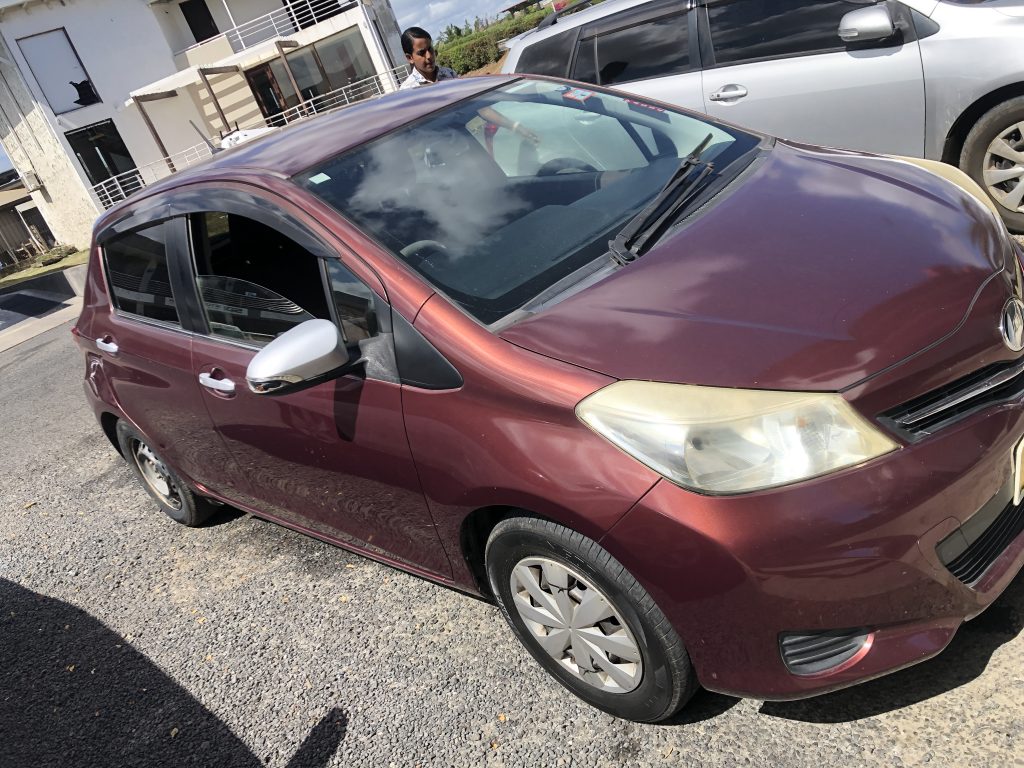This life lesson relates to my previous blog post #88 Swim with Sharks.
Swimming with sharks; BASE jumping; driving. Go ahead, rank them in order of most dangerous to least dangerous. These all play a part in this next story.
In June 2024 I set off on an adventure to Europe to learn how to fly my tracking suit in a BASE environment. New Zealand does not have massive shear cliffs, so my friends and I head to Europe in the northern hemisphere summer to practice terminal flight. And no, not terminal like “certain death”; terminal like “terminal velocity”.

While I already had 180 BASE jumps from lower objects, and without a tracking suit, this was a new discipline for me. However, I had been training hard, so I was not too nervous or fearful of jumping into this new discipline. As June approached, the topic of my holiday became more common in the office, with my colleagues. In my many discussions, there were a lot of the typical questions: “Oh wow, you do that?” “Is it dangerous?” “What happens if your chute doesn’t open?” The fear and concern from my co-workers were about what I expected.
Fast-forward to August when I am gearing up for my shark diving holiday. I had similar discussions about my upcoming holiday, but the response was magnified. “Oh my god, no way!” “Aren’t you worried you are going to get eaten?” “That sounds more dangerous than BASE jumping!” I was shocked by the intensity of their reactions. Even the looks on their faces and their hand gestures were more animated. It appeared that swimming with sharks ranked higher, in their perception of fear, than BASE jumping.
There is a bit of logic behind this. In BASE jumping, whether I live, or die, is solely dictated by my own actions. While swimming with sharks, they are the wildcard that I cannot control. If they did, in fact, decide to have a nibble of me, it might be my last scuba dive.

I can’t help but think of a book I read recently called Thinking Fast and Slow. The book discusses the two systems behind our thought processes. System 1 is the intuitive system that comes up with answers quickly but is subject to errors. System 2 is much slower because it is more deliberate and analyses more data, to give you a better answer. Here’s how it works.
Statement: I am going to swim with sharks.
System 1 process: Sharks kill people.
System 1 conclusion: Dave is going to die.
Statement: I am going to swim with sharks.
System 2 process: Sharks kill less people than Coke machines do in the USA. This company has been operating for years without anyone dying. Sharks are generally misunderstood and would not attack a scuba diver that is healthy, not struggling and constantly staring at them.
System 2 conclusion: Sounds crazy, but Dave will be fine.
As soon as you say the word “sharks”, most people engage System 1 thinking and blurt out a statement. A similar thing happens with BASE jumping, but on a lesser scale.
Swimming with Sharks
Now, let’s looks at a 24-hour period in Fiji, during my holiday. I woke up at 6:30 am, had breakfast and checked in at the dive shop around 8:00 am. By 8:30 am, we were on the boat and heading out of the estuary toward Shark Reef. We were in the water for our first dive around 9:30 am and our second dive around 11:30 am. Both dives were amazing, and we got up close and personal with five different kinds of sharks. Close enough that their tales were smacking us in the heads, yet they were not interested in us. They were interested in the free tuna heads. In short, it was an amazing experience, and I felt no increase in heart rate, nor did I feel any kind of a fear response.

Here are two quotes from my close BASE jumping friends, after I told them how amazing it was to have 40+ sharks swarming around us: “More balls than me!” “I know you’re meaning that in a good way, but that sounds like a fucking nightmare.” Even BASE jumpers think sharks are scarier.
BASE Jumping
The next activity I participated in was BASE jumping. While I did not advertise it to most people, I brought my BASE rig with me, intending to jump a building that was under construction. I had known about the building for a while and wanted to get in before the construction was finished. I scoped the building two days prior to figure out how I would enter the construction site, where I would land and how I would get away.
I found a weakness in the perimeter fence, which gave me my access point. From there, I worked out my landing area. It is best to do this in the daytime, so that you can pick up on things, like power lines and flag poles that might not be visible in the nighttime. You want to know that your flight path is clear all the way to the landing area. With my landing area chosen, I walked from there to where I intended to park my car. Sometimes there are small fences, or obstacles that you need to be aware of to make the getaway smooth. To finish it off, I drove the getaway route, all the way out of the city, to memorise the route. I wanted to minimise the amount of thinking I would have to do, in the moment, while the adrenaline was pumping.
We got back from the shark dive around 12:30 pm, and I spent the afternoon around the pool, reading a book. I had an early dinner and went to bed by 5:30 pm, so that I could wake up at 1:00 am and head to the construction site. I took my time getting in there and reassessed all the work I had done a couple days before, to ensure that nothing drastic had changed. When I was ready, I geared up and followed my plan.
A short walk, and then up and over the fence in a few seconds. Once I was inside the fence, I was hard to spot, and the sneakiness could subside. I walked in the main entrance like I owned the place and intuitively found my way to the internal stairs. I remember thinking, “If this place was finished, I would walk over here and expect there to be elevators, and then the stairs should be behind the elevators.” This all played out as I expected, and I spent the next while climbing up the stairs to the roof. When I got there, I was delighted to find a gentle breeze on my back, which is ideal when jumping buildings.

I found my exit point and got ready. With a deep breath and my classic count of, 3-2-1-see ya, I leapt off the roof. Within seconds, my chute cracked open, and I followed my flight path down to a safe landing area. I stashed my gear, followed my planned path back to the car and drove my getaway route. Everything went textbook. So much so, that I barely remember a heightened heart rate or a fear response from the whole experience. So far, two very different activities, yet the same, mild response. Perhaps that’s just my psychological makeup, but let’s look at the next activity.
Driving
It was 4:30 am at this point and I was driving back to my resort after having survived two shark dives and a BASE jump. As I mentioned in my post #88 Swim with Sharks, I had a small, basic car while I was there. The ring road around the island had a speed limit of 80 km/h, which is all this car could handle without sounding like it was going to explode.

Unlike developed countries, the roading and maintenance standards are not as stringent in Fiji. While countries like New Zealand still have shit roads, that taxpayers love to complain about, the health and safety legislation dictates that signage and barriers must be used to alert drivers to upcoming road maintenance. The speed limit is also reduced to protect workers and drivers. Not in Fiji though…
Instead of being alerted to what lies ahead, you need to be able to see it. This is fine in the daytime, but a different story at night. I knew of this patch of tar seal that was ripped up and lined with marble-sized gravel but had forgotten about it on my way home. I was going 80 km/h at the time and remember my headlights revealing the gravel a short distance ahead. In that moment, I felt the first fear response of my trip. My heart rate went through the roof, my vision narrowed, and my arms began to tingle eerily.
My internal thought process shut out everything non-critical and began problem solving the situation. This is bad, you need to brake hard and reduce your speed. I braked for as hard as I could for as long as I could, until my front tyres neared the edge of the gravel. I let off at the last moment to allow the car to settle out and re-distribute the weight across all four tyres. As I broke the threshold of the gravel the car stayed straight, but only for a moment, before it began turning to the right and into oncoming traffic. The car is now facing 45° to the right and heading straight at a pair of headlights. Shit! Sideways is okay, but you need to get out of the other lane!
I counter steered to the left and eventually brought it around, now facing 30° to the left, and watching my headlights drop off a steep ditch. Okay, this is better than a pair of headlights, but you’re not out of the woods yet. Another counter steer and another over correction, but now only 15°, and slowing down. However, the headlights are now meters away. Just one more! Correct the angle, feather the brakes and bring it back into your lane. With one last counter steer, I brought the front of the car around, narrowly missing the other car. By the time I reached the end of the gravel section, I had slowed to a crawl and was moving in a straight line again. I touched the tar seal on the other side and breathed a sigh of relief.
Without stopping, I resumed my journey back to my resort. As I continued to drive my heart rate slowly dropped, the cold sweat on my face began to evaporate and all systems went back to normal. When I pulled into my resort, I reflect on the conundrum of fear. Everyone else was most worried about the sharks, I was most worried about BASE jumping, and yet driving was the thing that found me closest to death. This was certainly a shock to me.
How many of you expected this when I asked you to rank them at the start?
Want to be notified when new blog posts are uploaded? Subscribe below.

Dave has been on a mission, since 2010, to cross off the 100 items on his bucket list. The stories of his adventures are complimented by life lessons learned along the way and his travel tips are unique to his experiences.

